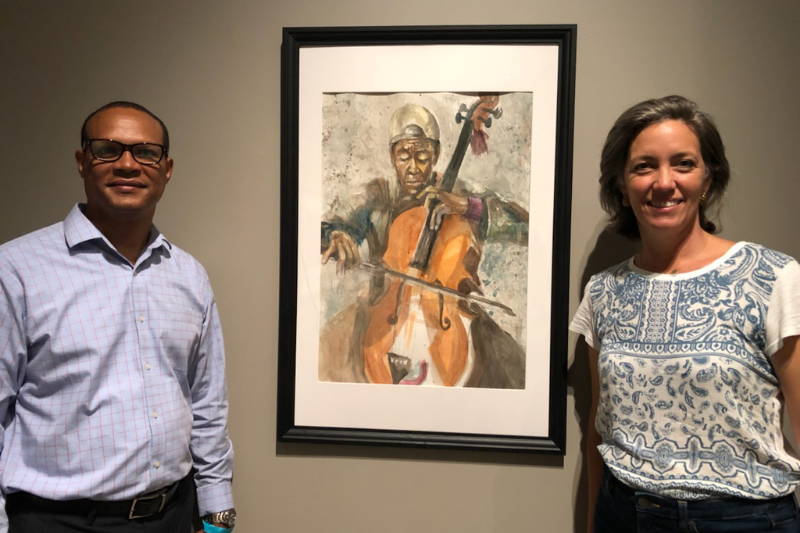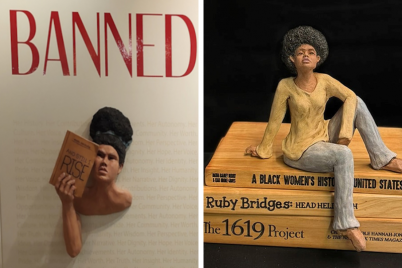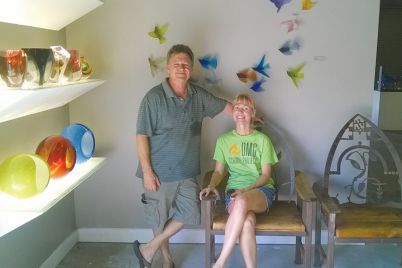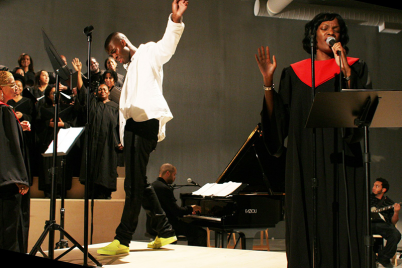Artist Dallas Jackson, Ph.D. with Laura Hine, executive director of the James Museum of Western & Wildlife Art
BY OSCAR PIVEN, Staff Writer
ST. PETERSBURG — When something reverberates, it continues on as if in a series of echoes — which is exactly what the Dr. Carter G. Woodson African American Museum hopes to accomplish with its new art exhibit, the aptly titled “Reverberations,” on view at the James Museum of Western and Wildlife Art now through Aug. 29.
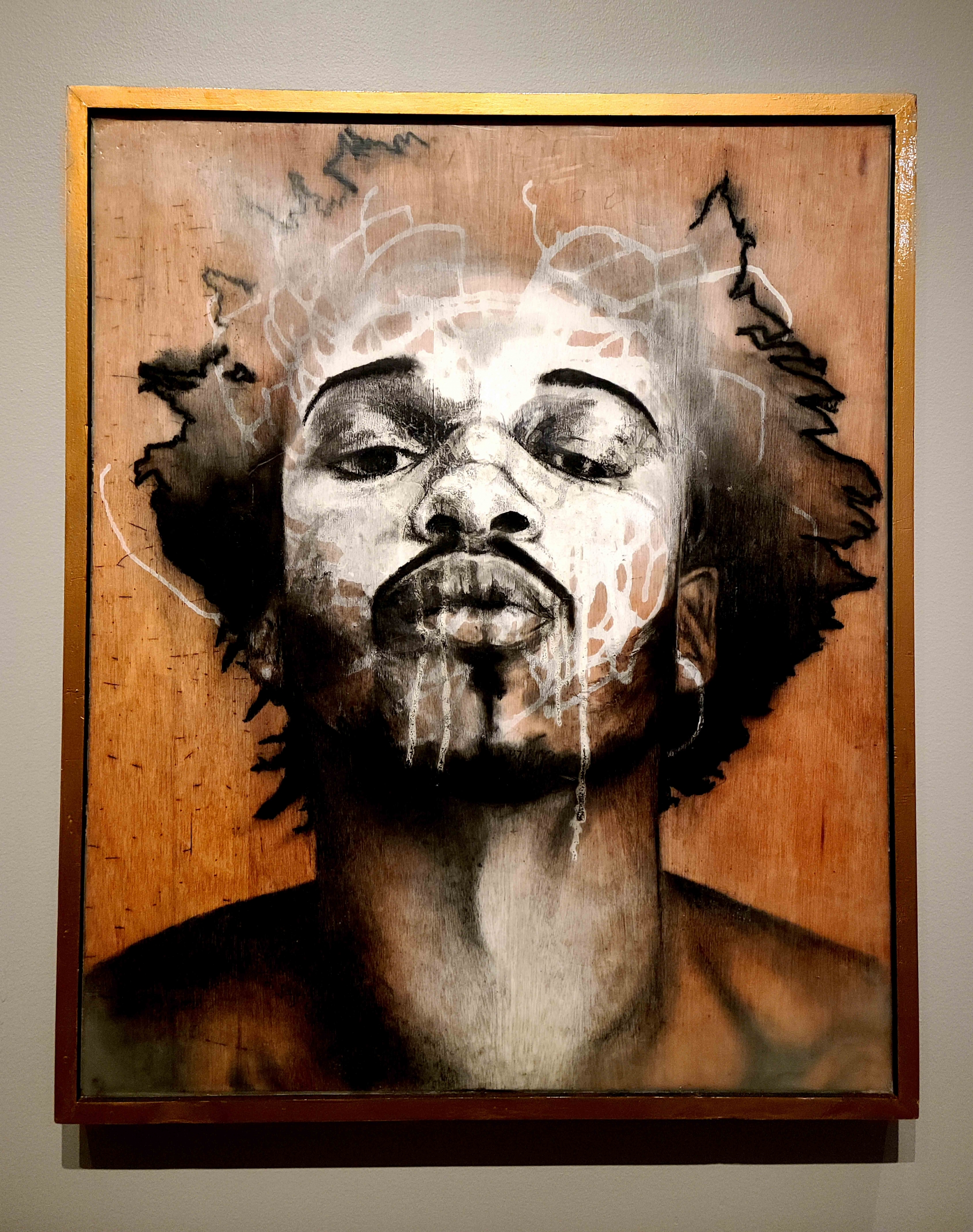 “Reverberations” features Black artists from the Tampa Bay area and around the southeast. The artwork was expertly curated by St. Pete local Desmond Clark to blend the past and present in revealing stories of racism, oppression, hope, resilience, and identity.
“Reverberations” features Black artists from the Tampa Bay area and around the southeast. The artwork was expertly curated by St. Pete local Desmond Clark to blend the past and present in revealing stories of racism, oppression, hope, resilience, and identity.
Clark said that while an exhibition of this size would normally take about 12 to 18 months to set up, they did not begin until January due to the challenges faced in 2020. Not only did they spend the last five months procuring the art, negotiating, and working out contracts, but they also had to find a proper host as the Woodson Museum does not have space.
“That speaks to, in large part, the way Blacks exist and have existed for a long time as well,” said Clark. “Because they’ve never really had the luxury of having a lot of capacity or a lot of resources, and so they have always had to do what they could do with as little as possible, and you learn to plan today for tomorrow.”
“We accomplished it. We got it done.”
The exhibit is striking and expansive, featuring 60 pieces of art over several mediums. One highlight for Clark is a self-portrait by Jeremy Bell, in which he took hundreds of photos of himself every day so that he could be familiar with how people see him. The painting is encaustic, meaning Bell used hot wax over wood along with acrylics and spray paint to bring out the sense of individualization.
“It is one of the first pieces I wanted to have people see because it starts the conversation of Black identity,” said Clark.
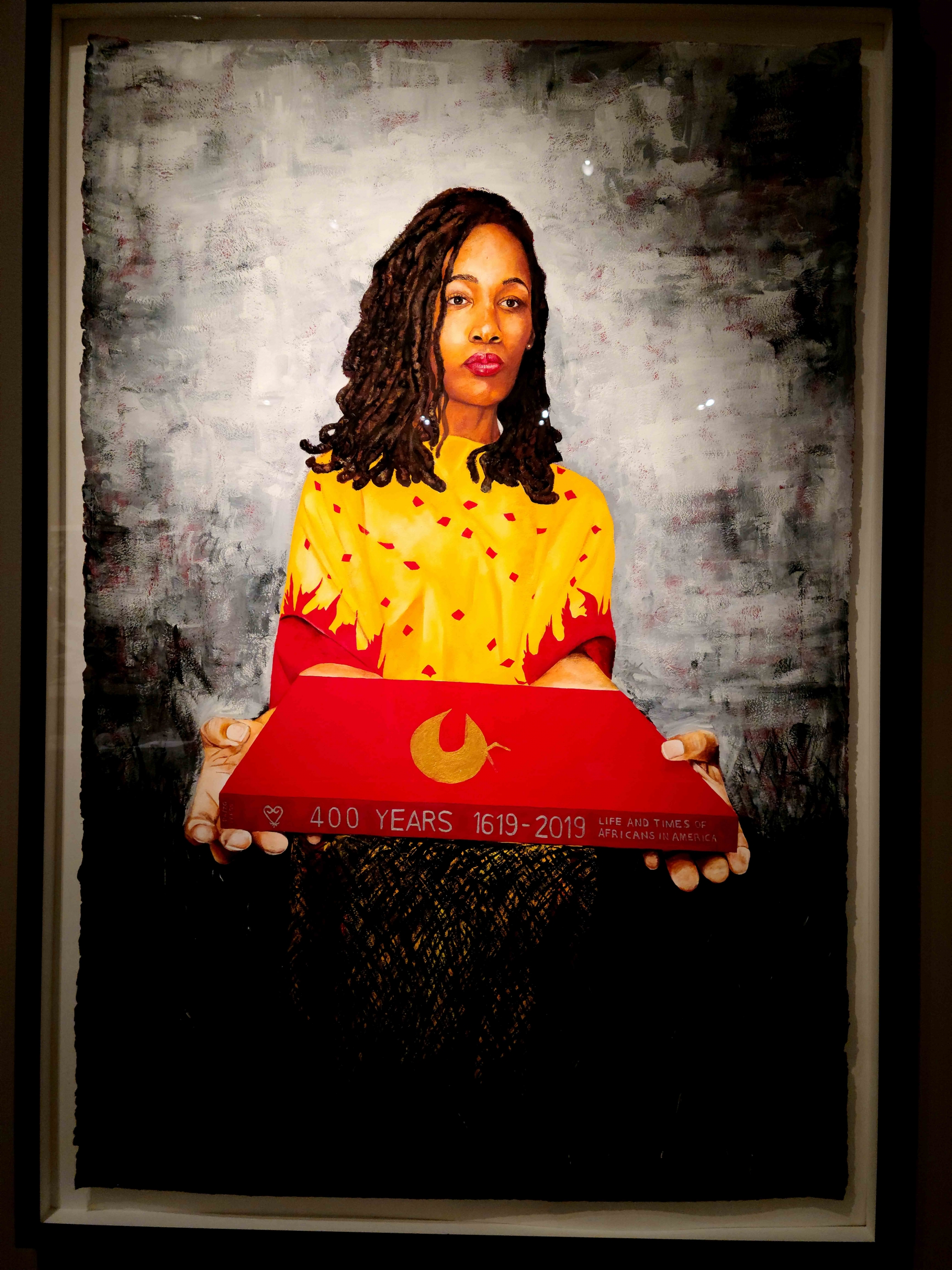 Another popular piece with both Clark and Malynda Washington, community engagement manager at the James Museum, is Aaron Henderson’s “400 Years.” It depicts a woman holding the book “400 Years 1619-2019,” which signifies the time between the British warship, White Lion, exchanging 20 African slaves for supplies, and the event being recognized as the beginning of the slave trade in what would later become the United States.
Another popular piece with both Clark and Malynda Washington, community engagement manager at the James Museum, is Aaron Henderson’s “400 Years.” It depicts a woman holding the book “400 Years 1619-2019,” which signifies the time between the British warship, White Lion, exchanging 20 African slaves for supplies, and the event being recognized as the beginning of the slave trade in what would later become the United States.
This painting is gouache (an opaque watercolor) on paper and could spark two separate conversations, said Clark.
“We can talk about this being the beginning of slavery in America, or we can talk about the fact that before 1619, Blacks actually do have a history that predates slavery, that predates slaves in America or Blacks in America,” said Clark. “That history is not something that was well documented, and we’ve had to find ways of discovering it.”
This powerful exhibit would not be possible without the James Museum, as the Woodson Museum does not have space or a sufficient facility for such displays. Terri Lipsey-Scott, executive director of the Woodson, said that the only reason St. Petersburg currently has an African-American museum is thanks to residents of a public housing development giving their community center to the cause.
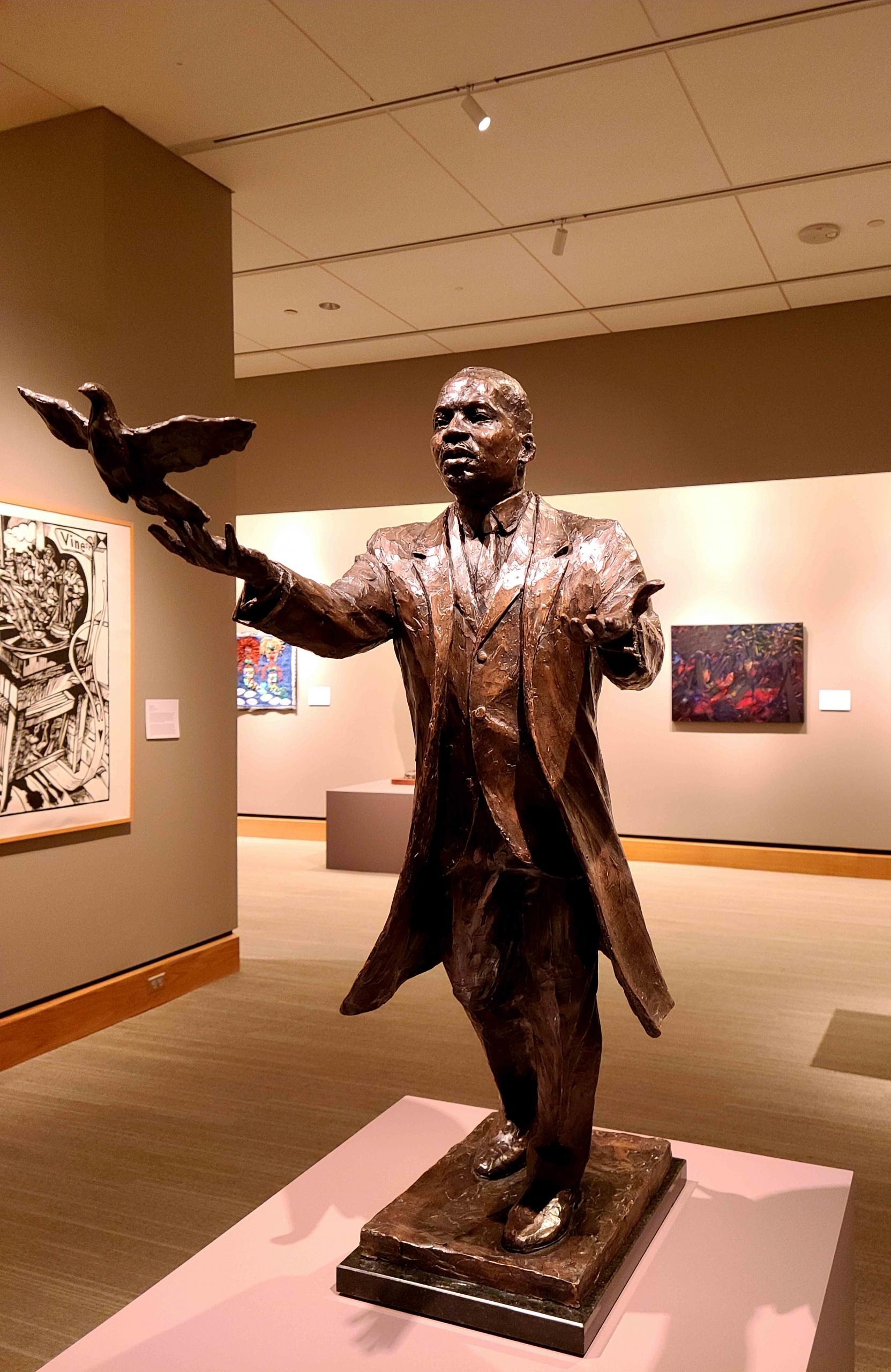 “The ones with the least give the most…” said Lipsey-Scott. “Those in public housing won’t even have a community center because we want a place here in St. Petersburg where we can preserve and interpret the African-American story. And here we are a city of museums; here we are a city that is highly celebrated for preserving history and culture.”
“The ones with the least give the most…” said Lipsey-Scott. “Those in public housing won’t even have a community center because we want a place here in St. Petersburg where we can preserve and interpret the African-American story. And here we are a city of museums; here we are a city that is highly celebrated for preserving history and culture.”
While Lipsey-Scott is thankful for the city recently donating five and a half acres and a million dollars in startup capital, she said they will need 26.5 million and believes that the city is “not acknowledging how critically important this is and what role they should play.”
“We’re in the process of a capital campaign with the hopes that others will see the value in this,” said Lipsey-Scott. “There’s a jewel missing in our crown of museums here in St. Petersburg, and that being the presence of a proper African-American museum.”
While Lipsey-Scott hopes to be able to permanently display exhibitions like this once the new museum is built, Washington says that “Reverberations” gives the public an idea of what kind of exhibitions they can expect from The James Museum moving forward. She said that being a new museum, much thought went into what direction they wanted to go in after the pandemic.
“We aspire to work for organizations like the Woodson Museum to make sure we are telling these thought-provoking, powerful stories,” said Washington.
“Both Terri and Laura Hine, who is the executive director here, have a very similar agenda in terms of where they see their exhibitions going,” said Washington. “With her museum opening up soon and us being a new museum that is still trying to become a pillar in the community, what do those exhibitions look like? So, it only made sense that we would do something like this here.”
The James Museum of Western & Wildlife Art is located at 150 Central Ave. and is open Wednesday through Monday from 10-5 p.m. and 10-8 p.m. on Tuesdays. For more information, call 727-892-4200, or visit www.thejamesmuseum.org.

